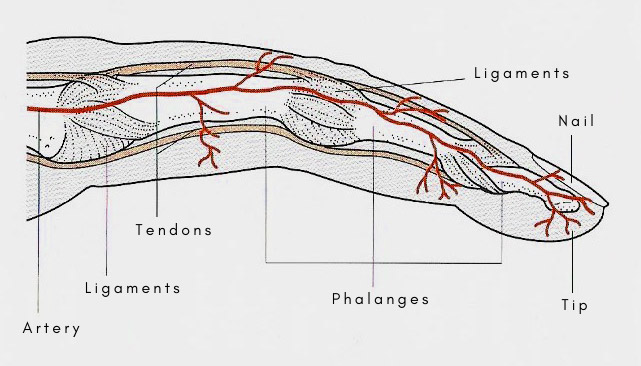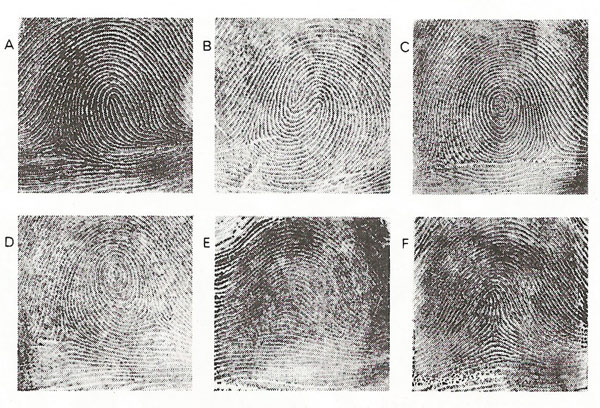finger

Figure 1. The phalanges (finger bones) are joined at hinge joints and moved by tendons.

Figure 2. Examples of fingerprints.
A finger is any of the digits of the hand. Each finger has three phalanges, except for the thumb, which has two. The phalanges join at hinge joints moved by muscle tendons that bend or straighten the finger. The tendons are covered by synovial sheaths that contain synovial fluid, to enable the muscles to work without friction. A small artery, vein, and nerve run down each side of the finger. The entire structure is enclosed in skin with a nail at the tip (Figure 1).
Fingerprints
Ridges in the dermis or deeper skin of the fingertips show through on the surface as fingerprints and these are specific to the individual (Figure 2). Fingerprints, first used to solve a crime more than a century ago, made their debut in police work in Argentina in the 1890s. This method of identification was introduced to Britain in 1901. Referring to the illustration here, distinctive patterns include the loop (A), which is most common, the double loop (B), the whorl (C), the central pocket loop (D), the arch (E), and tented arch (F). Fingerprints remain the same throughout life unless the dermis tissue is accidentally destroyed.


